PHILAE TEMPLE
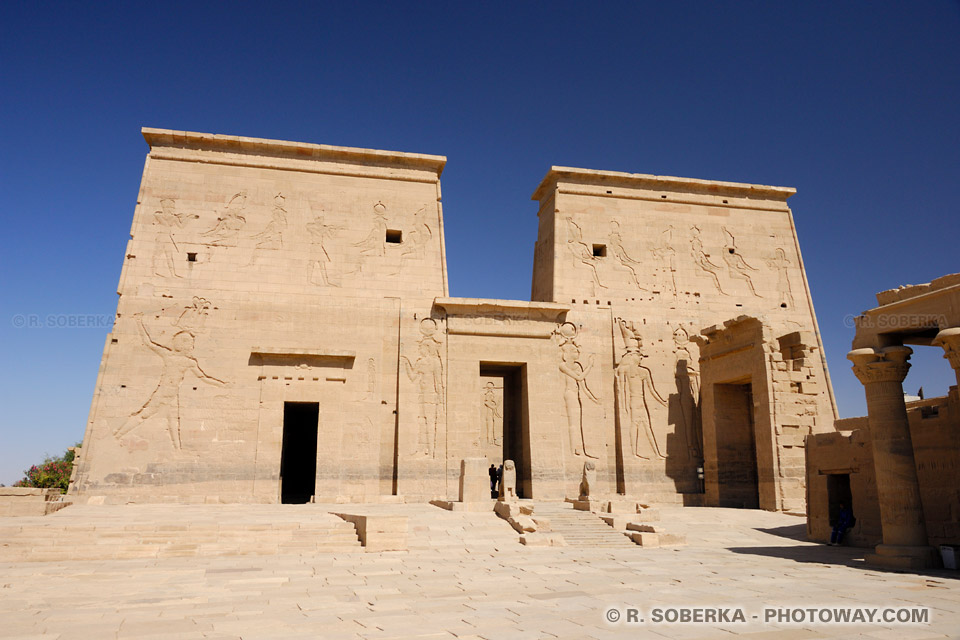
Philae, located just 3 miles (5 kilometers) south of Aswan, is a remarkable site that is a must-visit.
It is a temple that was saved from the waters through a complete relocation!
For over 2,500 years, it stood on the small island of Biggeh, nestled between two branches of the Nile...
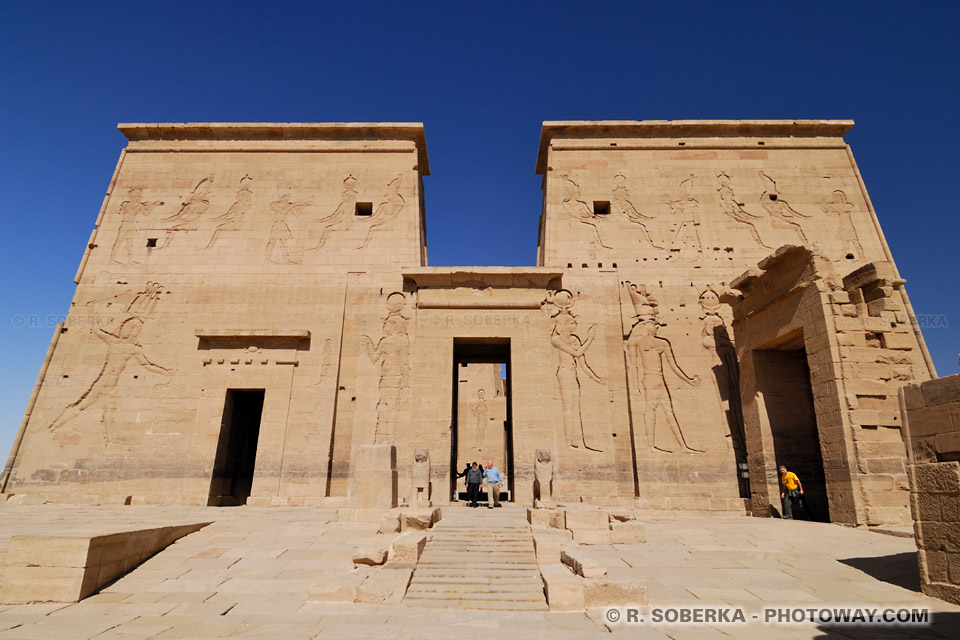
But over time, with the construction of the Aswan High Dam and the great floods, the temple complex was submerged under the rising waters of the Nile.
In 1968, under the initiative of UNESCO, an international fundraising campaign raised $15 million to save this cultural treasure.
Over ten years, approximately 50,000 sandstone blocks, each weighing between 2 and 25 tons, were carefully dismantled, transported, and reassembled on a nearby island, Agilkia, chosen for its elevation above floodwaters.
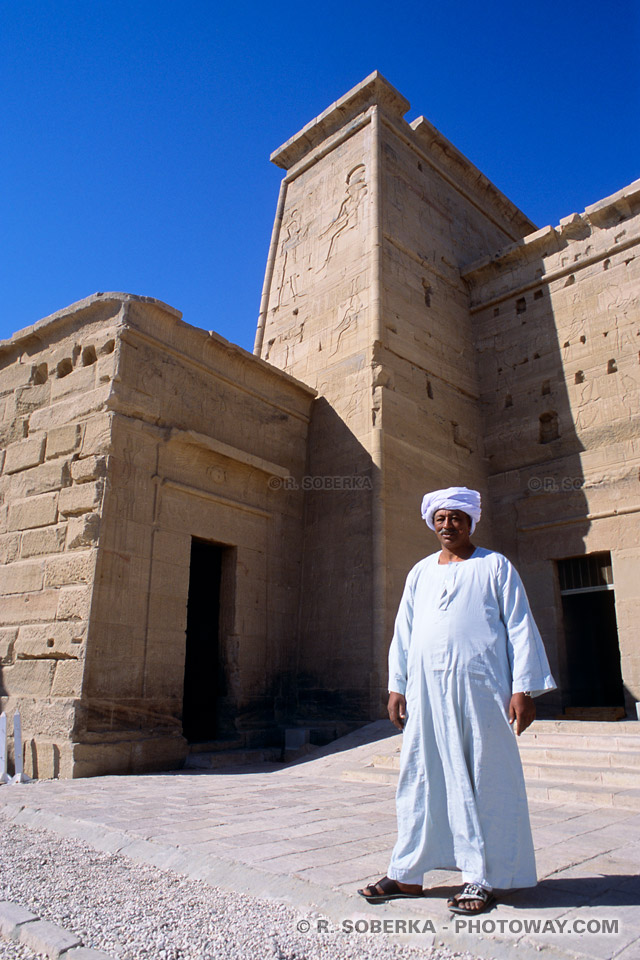
Today, the restored Temple of Philae stands as a symbol of national pride, reflecting the resilience of its people and traditions, embodied by this temple guardian.
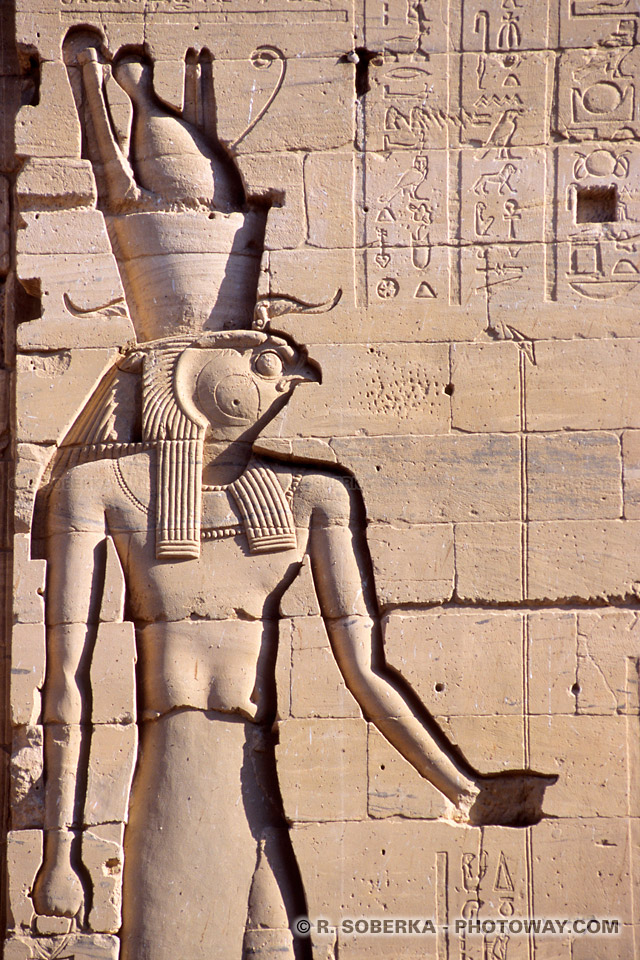
The Temple of Philae was primarily dedicated to the worship of Isis, revered as the goddess of motherhood, magic, and fertility.
It also played a central role in celebrating the resurrection of Osiris, her husband and the god of the afterlife.
Other deities are also honored within the temple’s walls, including, as seen here, Ra, the sun god, who symbolizes creation and eternal light.
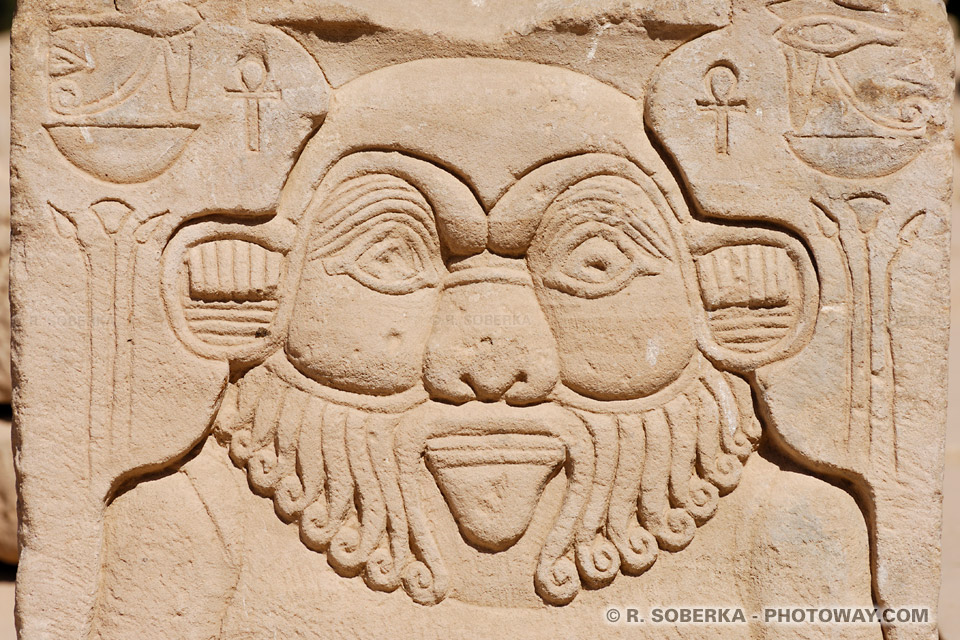
...or this engraving of the Egyptian god Bes, recognizable by his jovial and unique appearance, revered as the god of music and festivities.
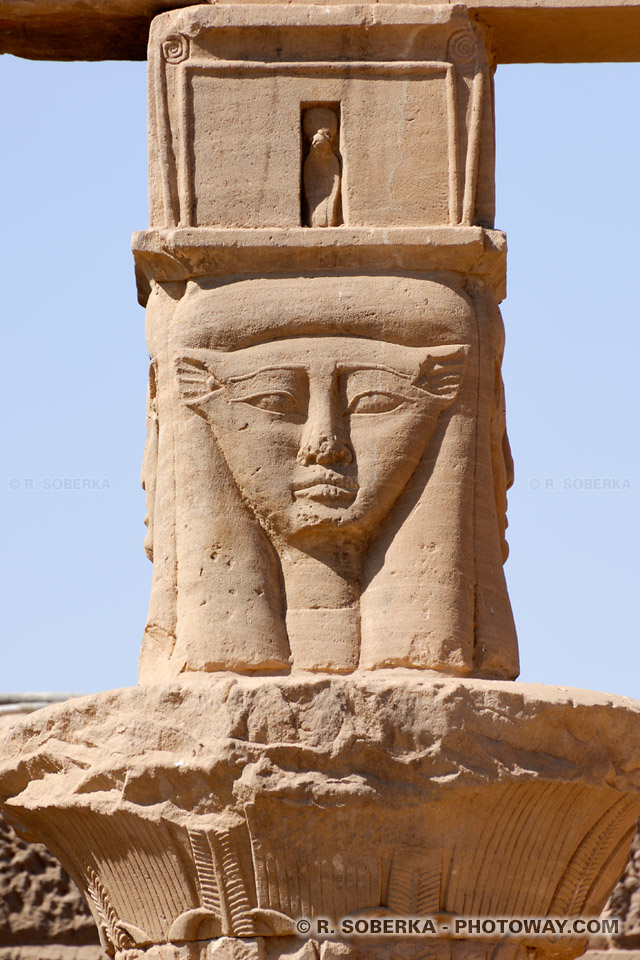
...or the head of the goddess Hathor, adorning the top of this column.
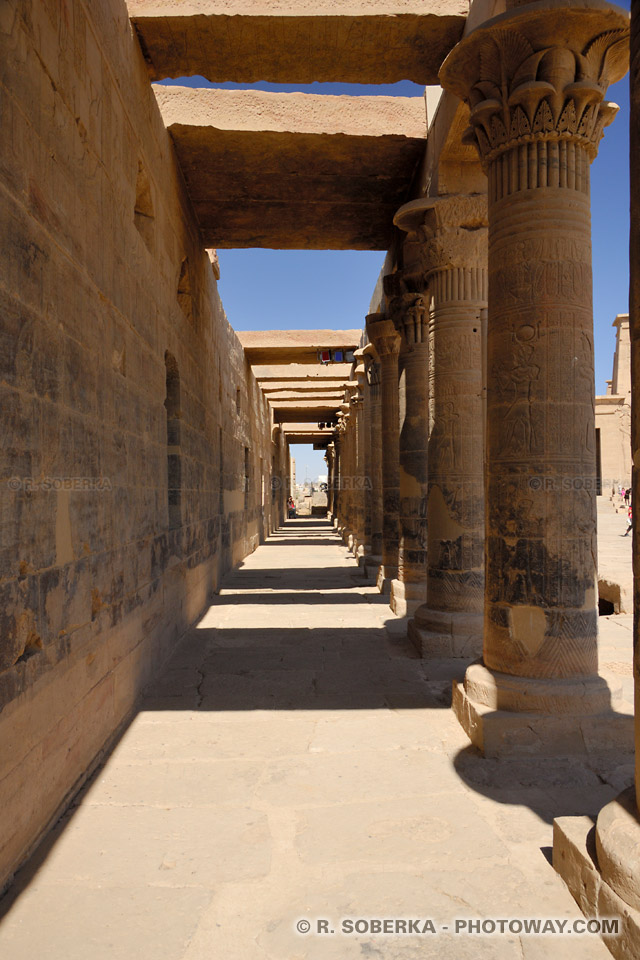
The Temple of Philae features numerous columns, such as those of the western portico, seen here.
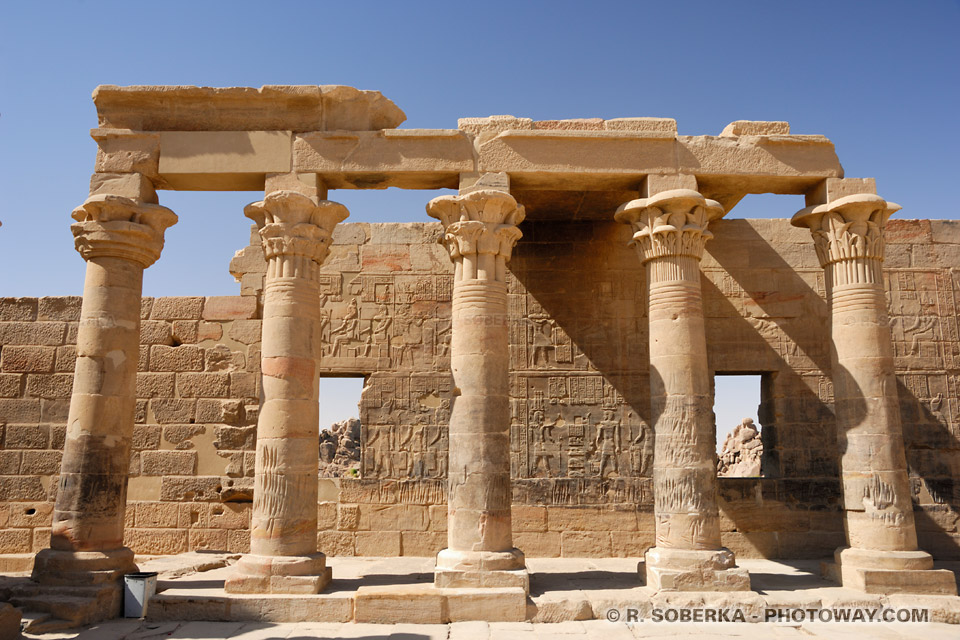
These columns of the western portico, adorned with floral motifs, are part of Nectanebo I's pavilion at Philae, built during the 30th Dynasty (380–362 BCE).
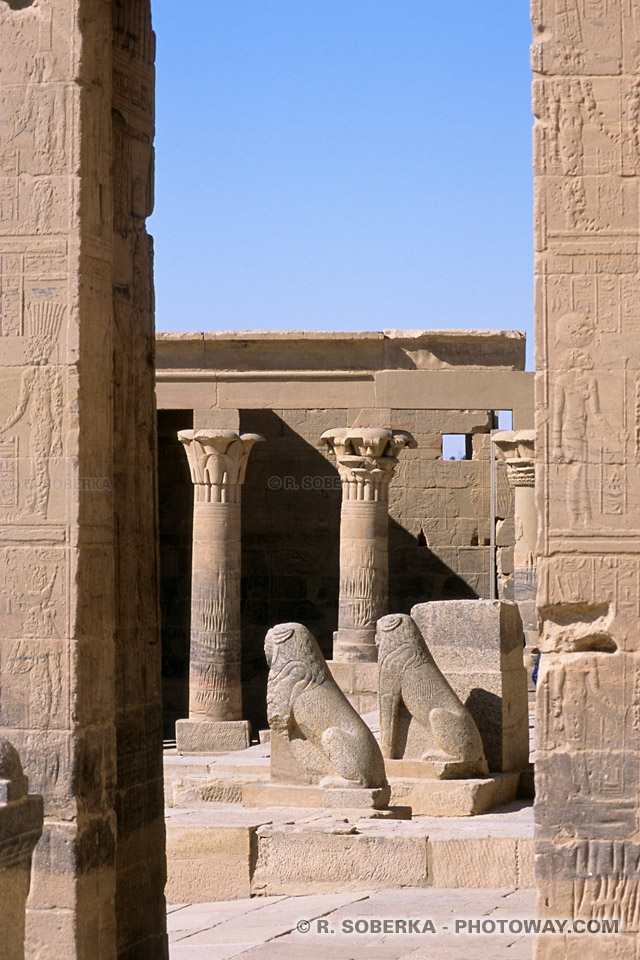
The main entrance to the Great Temple of Philae is guarded by two imposing lion statues, symbols of protection and strength, as well as by...
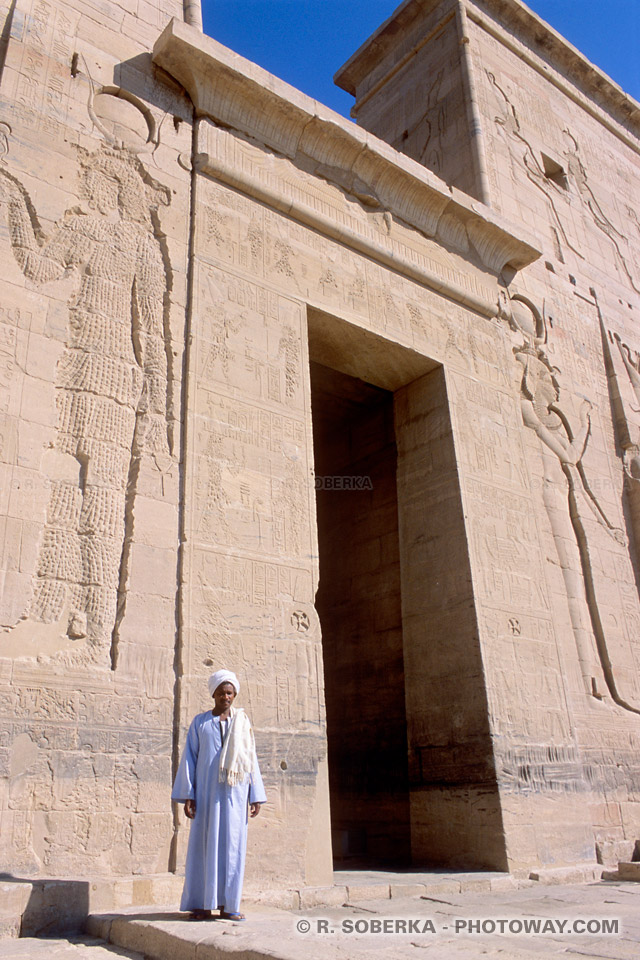
...a guardian who won't hesitate to ask you, "Bakshish, sire!"
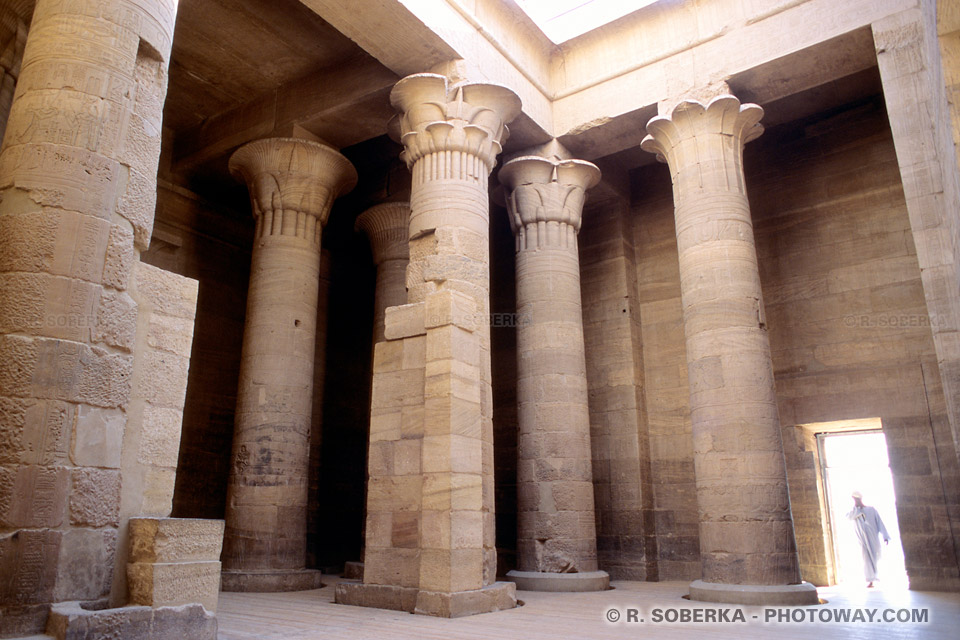
Behind the first courtyard lies the Pronaos, a small semi-covered hall adorned with numerous columns topped with finely carved capitals.
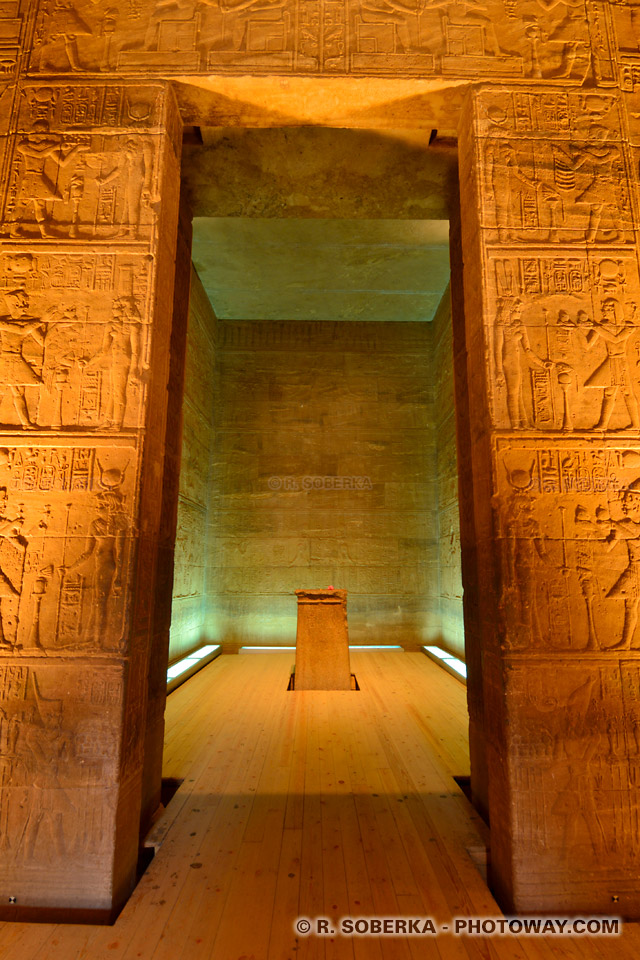
Just behind the columns is the entrance to the sanctuary, marked by a gateway leading to the most sacred part of the temple.
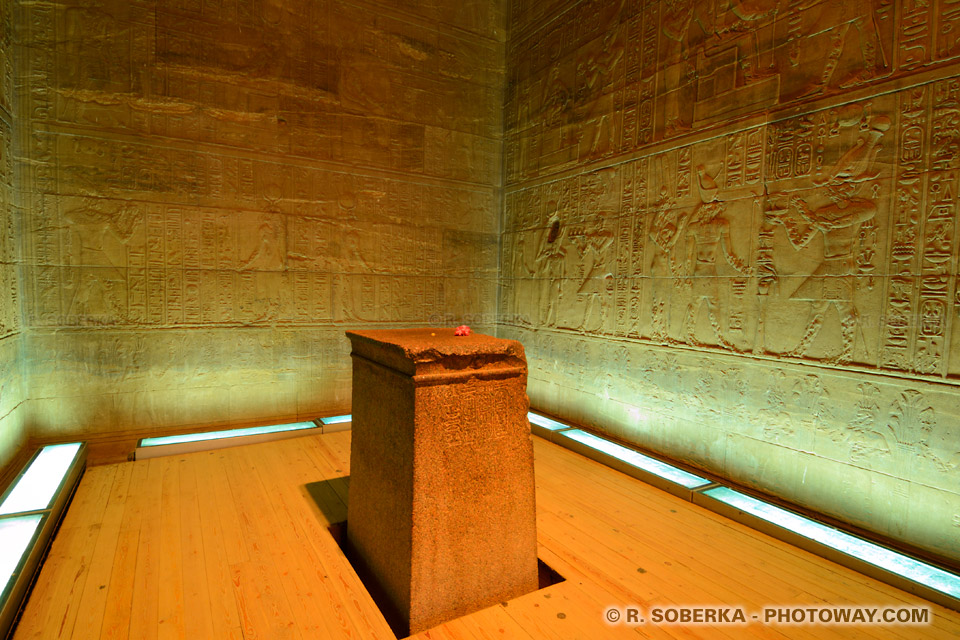
Also called the Naos, this small room imbued with mysticism once housed a sacred shrine containing a representation of the goddess Isis.
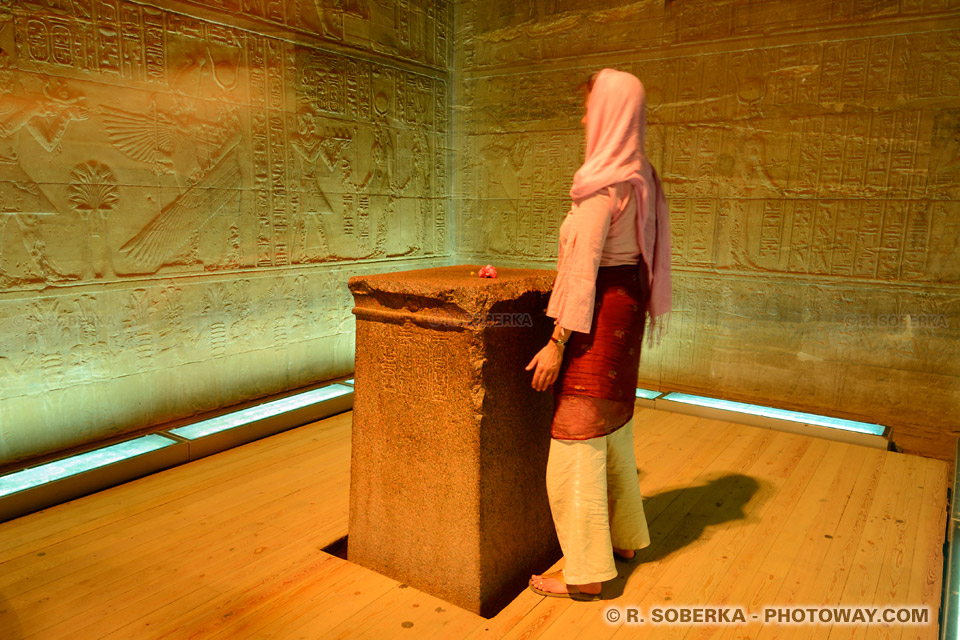
Today, this place is revered by tourists seeking a mystical atmosphere, often attracting visitors like this woman in deep meditation.
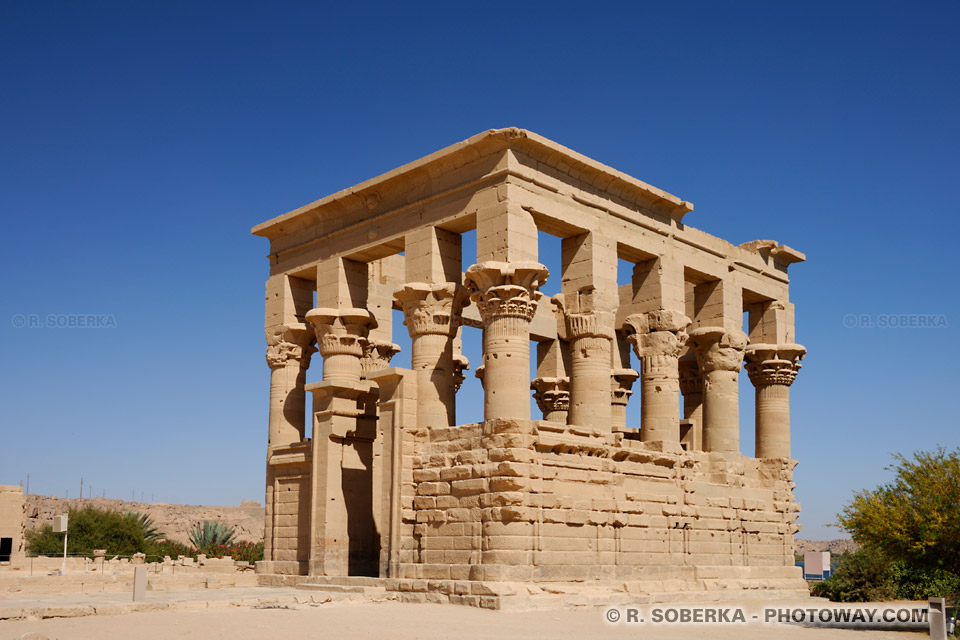
To end our walk, located about 100 meters from the Grand Temple, Trajan's Kiosk is a Roman-era pavilion built during Emperor Trajan’s reign (98–117 AD).
Also known as "Pharaoh's Bed," its 14 carved columns and unfinished roof make it a striking feature near the Nile, likely used for Isis-related ceremonies.
It’s time to leave the Aswan area and head further south to visit one of Egypt’s most majestic sites...
All photos of Philae Temple © 2002 and 2010 by Richard Soberka